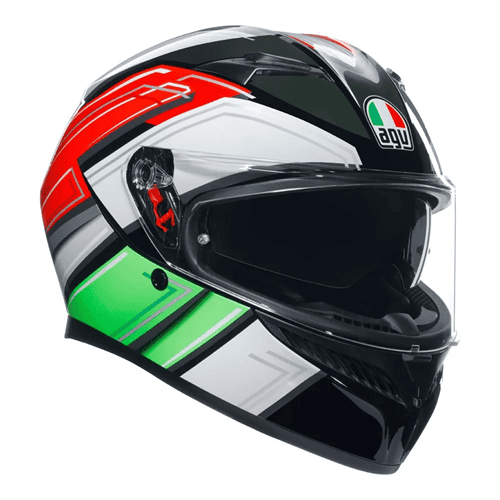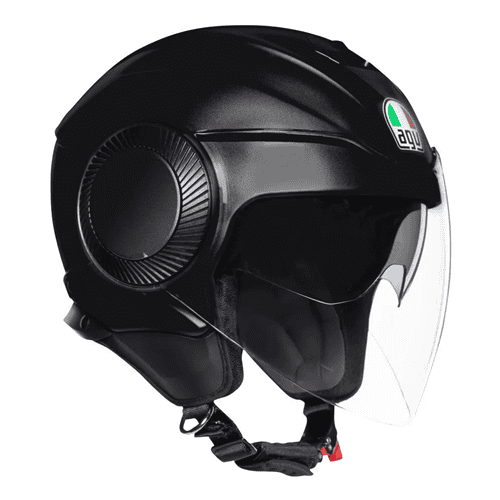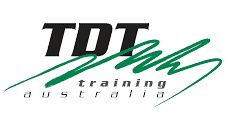For motorcyclists in Victoria, Australia, your helmet isn’t just part of your gear; it’s a crucial component of your safety on the road. Understanding the right type of helmet to get, especially for beginners or those returning to motorcycling after a break, is vital for ensuring optimal protection.
Compliance with Safety Standards
In Australia, it is mandatory for all motorcycle helmets to meet the AS/NZS 1698 safety standards. If compliant, helmets will have an AS1698 certification mark which should never be removed or tampered with. Wearing a helmet that does not comply with these standards not only compromises your safety but also exposes you to potential fines.
There is no piece of riding gear more important to your safety than your motorcycle helmet. So, it isn’t surprising that a lot of beginning motorcyclists, or motorcyclists coming back into the fold after years away from riding, aren’t really sure which helmet is going to be best for them.
Safety Standards and Condition
Any helmet you wear in Australia must, by law, bear evidence of having been Certified as compliant with AS/NZS 1698:2006, or ECE 22-05 or AS 1698-1988.
Second Hand Helmet?
Never, ever buy or use a second-hand or aged helmet. This is especially true if you’re coming back to motorcycling after some time away.
It is always better to purchase a new helmet, as the lining falls apart after several years, and there are no guarantees of the helmet’s past if it is second-hand. Motorcyclists know for a fact that a helmet will likely need to be retired after a crash, or a number of drops/falls. But, major damage to a helmet may not always show on the outside, despite the helmet’s protection being compromised.
Style and Fit
Open Face v Full Face
There are two kinds of helmet styles available to riders, both of which have models on the AS1698 safety standard: open face and full face helmets.
An open face helmet has a higher risk of allowing damage to a rider, especially in the chin and jaw area, and is not always the favoured choice of learner motorcyclists due. Additionally, choosing an open face helmet will, in some riding conditions, necessitate the use of additional eye and face protection.


What Materials are helmets made of?
There are a few popular materials used in the manufacture of helmets, but riders will quickly notice that cheaper helmets do not make use of any higher quality materials. Those with some money to spend should consider investigating in a helmet that is made of a composite material like Kevlar and carbon fibre, both of which are light and hold up well in a crash situation.
Fit
It is not usually recommended that motorcyclists, especially those without prior experience purchasing a helmet, buy their helmets online. The reason for this is that helmets need to fit very specifically in order to be safe in a crash situation. Even if you are familiar with the brand the helmet shape can be different from model to model.
As the size and shape of your head is unique to you, it is sometimes necessary to try on several helmets in a shop before making a decision.
Things to remember when fitting your helmet are that when the helmet is on it should cover your forehead, and you should just be able to see the edge of the helmet whilst looking up. Additionally, your helmet should be able to be fastened securely so nobody can pull it off you from behind, something that often happens when riders fall onto their backs in a crash. A high quality helmet is definitely worth purchasing, but a good fit is one of the most important considerations in buying one.
Comfort and Visibility
Once you’re certain that your prospective helmet is a good fit, you will need to ensure that it offers adequate visibility. Riders should be able to make the most of their peripheral vision while wearing a helmet, be able to turn their head, and be able to fit glasses or sunglasses into the helmet without too much pressure on the temples and skull.
For riders interested in having a tinted visor on their helmet, remember that it is against the law to ride in dark or low light conditions while wearing one. There’s no problem with using a tinted visor during the day, but riders should always have a backup clear visor for night riding that complies with visor safety standards (look for the AS 1609 – 1981 mark).
In terms of comfort it’s important to think about how the helmet will feel while wearing it for long periods of time, and how it will stand up to that. Helmets with vents in them allow air to be released, a saving grace in warmer weather, while others provide chin vents or even fog shields to stop misting, which can severely hamper vision. It also pays to look into helmets that have removable padding, as this can make your helmet last longer, with opportunities to wash and replace the lining regularly.
Colour
Beyond personal style, the colour of the helmet you choose can have an affect on your safety on the road. Remember that the helmet is almost guaranteed to be one of the first things that the drivers around you see, so having a helmet that attracts attention serves a safety purpose. Buying a brightly coloured helmet, or one with reflective panels, is a smart idea.
Price
Price is obviously a major consideration for riders when it comes to purchasing their first helmet. Obviously the helmet is an important piece of gear, but it serves little purpose as the only piece of safety gear. While it is important to get a good helmet, riders will need to allocate their money to ensure they are properly attired all over.
One important thing to remember when deciding on a price for your helmet is although it’s never smart to buy a cheap helmet (a $10 helmet for a $10 head), the most expensive helmet isn’t always going to be the best one for you. Consider your personal comfort, the fit of the helmet, and your own riding style before buying.
Maintaining Your New Helmet
Once you’ve purchased your helmet, there are a few things you can do to ensure that your investment isn’t wasted, and you’re able to get the most riding hours from the helmet before it needs to be replaced.
First of all, never put the helmet on the ground, as the abrasive surfaces can damage the outer shell. It’s also not a smart idea to rest your helmet on your handlebars and mirror, as over time the indentation in the foam can negate the safety of the helmet’s inner lining. A helmet bag, available in materials like neoprene, is a worthwhile investment if you don’t have a helmet hook under your seat.
A helmet should be taken care of in other ways as well. It should be regularly washed (with hands only), and the insides should be removed and cleaned if possible, or replaced, on a yearly basis (although this depends on the amount of use). Additionally, riders should take care in cleaning and wiping the visor, as they are easily scratched, and even a small mark can limit your vision on the road.
Over time, and especially if you aren’t careful with your helmet or if you’re in an accident, the helmet will need to be replaced. When shopping for a new helmet, always make sure that you undertake the same fitting process,


